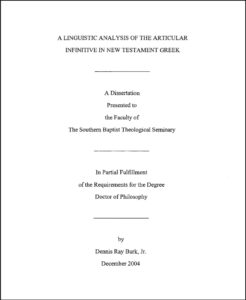 It is with great delight that I can now announce the launch of an updated version of The Center for New Testament Restoration with hosting support through Greek-Language.com.
It is with great delight that I can now announce the launch of an updated version of The Center for New Testament Restoration with hosting support through Greek-Language.com.
We all owe a great debt of gratitude to Alan Bunning for making his resources freely available online. I am proud to be able to support his work by giving those materials a home here at http://cntr.greek-language.com. While it is possible to access Alan’s materials at that address, though, to avoid confusion, I recommend that you bookmark them at his new domain name: http://greekcntr.org. You will see exactly the same resources at both addresses.
The Center for New Testament Restoration provides a wealth of data on manuscript readings in a very user-friendly format. If you are interested in textual criticism and have not yet discovered this resource, you should take the time to get to know it.
Here’s what Alan had to say in his announcement earlier today:
Announcing that the Center for New Testament Restoration (CNTR) website has been updated with several significant improvements. The most notable being the move from the unreliable free web hosting services I have been using, to a more permanent home at http://greekcntr.org. Please update your links accordingly. Many thanks to Micheal Palmer for providing services to host this website under his Greek-Language.com domain.
As has been eagerly awaited for some time, all CNTR transcriptions have now been released in the Text Encoding Initiative (TEI) XML format for free download under a Creative Commons license. Realize that these transcriptions are still a work in progress, so derivative works will not be allowed until later when more of the bugs have been worked out of the system.
Besides this, there have also been many other bug fixes and improvements in the manuscript transcriptions which are listed under the News tab. In particular, the position of the words in the collation has significantly improved due to a new and improved alignment algorithm.
Let me know if you see any errors or can suggest any improvements. Feedback is welcome as I look to improve this valuable resource and make the constructs of the New Testament free and accessible to all.
![]() The domain name greeklinguistics.com, which for some time now has worked as an alias for greek-language.com, will be out of service for a few days as we make the move to a more secure web server. I will be using the name greeklinguistics.com to set up the new server and test the site to ensure that everything works well before everything goes live there.
The domain name greeklinguistics.com, which for some time now has worked as an alias for greek-language.com, will be out of service for a few days as we make the move to a more secure web server. I will be using the name greeklinguistics.com to set up the new server and test the site to ensure that everything works well before everything goes live there.
 I have added Dennis Ray Burk’s doctoral dissertation “A linguistic analysis of the articular infinitive in New Testament Greek” to the
I have added Dennis Ray Burk’s doctoral dissertation “A linguistic analysis of the articular infinitive in New Testament Greek” to the  I would like to thank those of you who, over the last several years, have submitted suggestions for
I would like to thank those of you who, over the last several years, have submitted suggestions for 

 It is with great delight that I can now announce the launch of an updated version of
It is with great delight that I can now announce the launch of an updated version of 